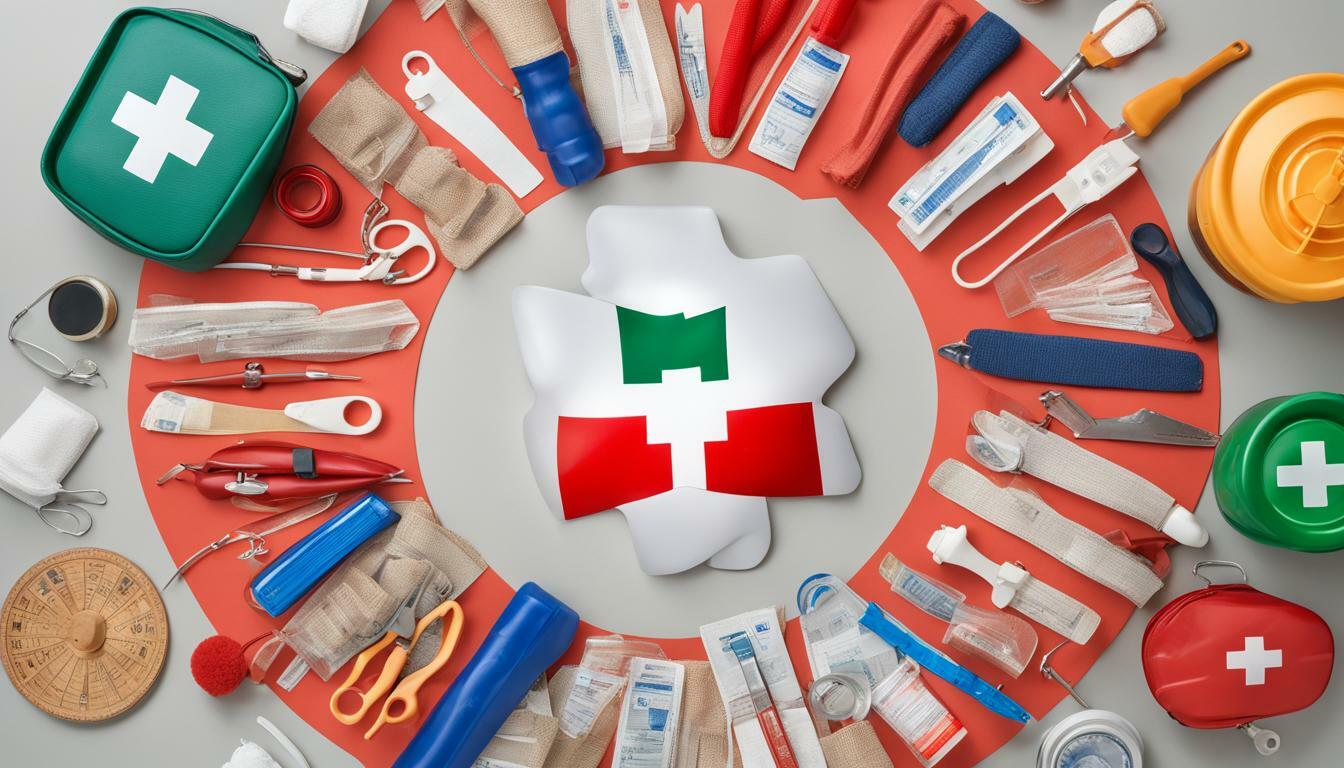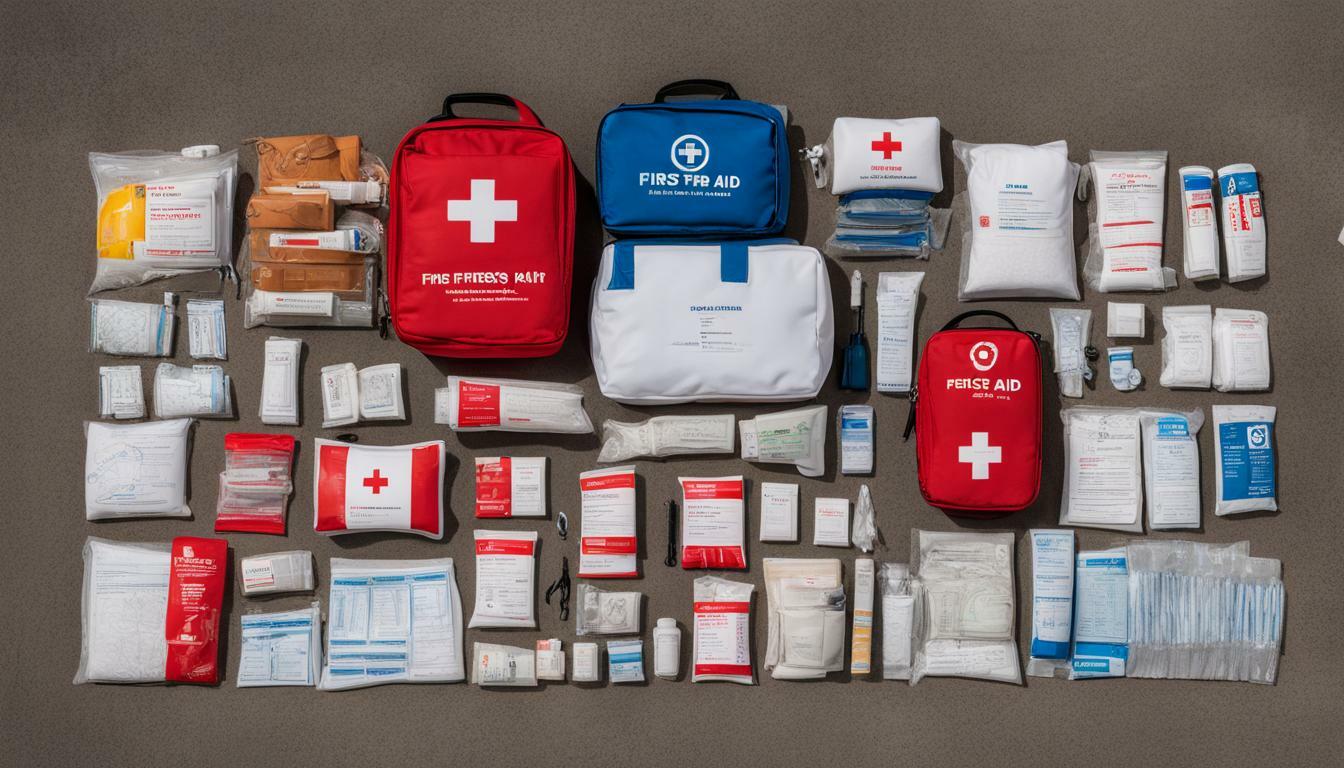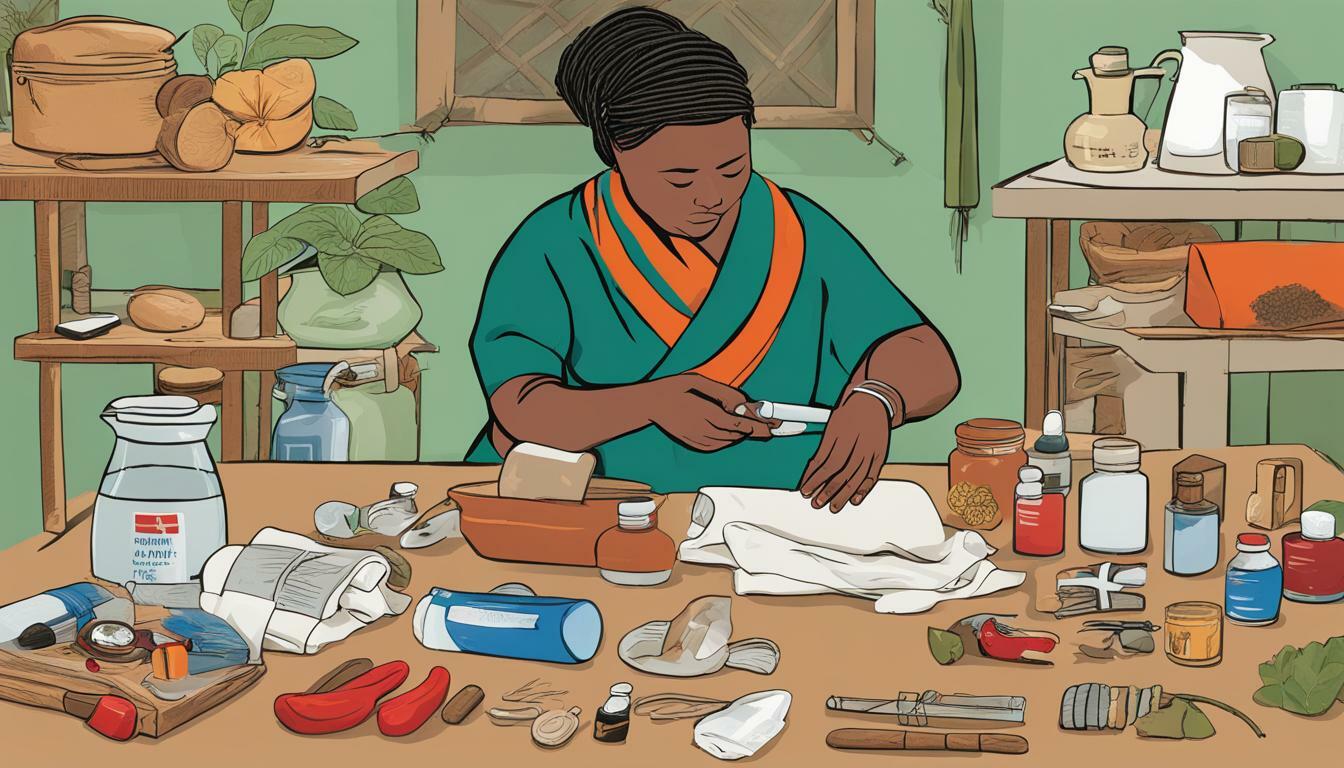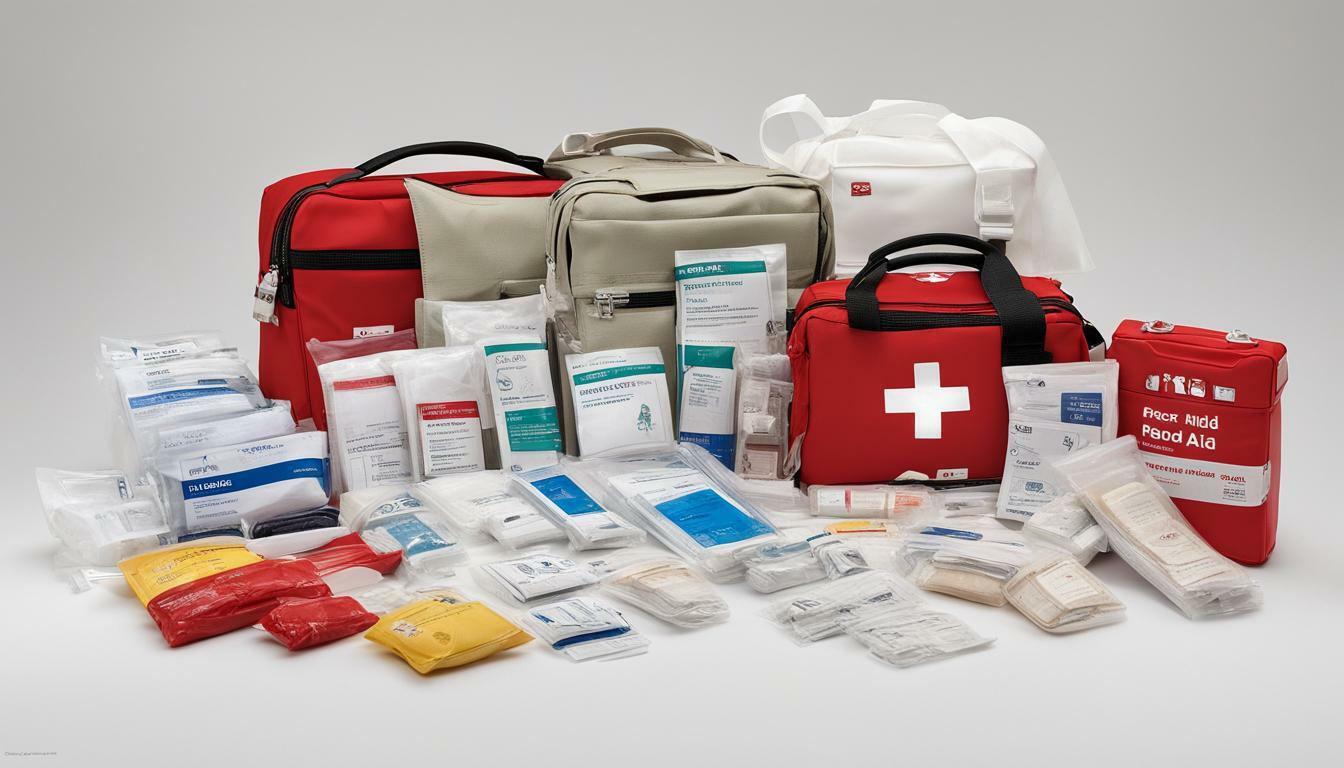When it comes to first aid, there is no one-size-fits-all solution. Different cultures have their own unique perspective on what constitutes an emergency, how to provide first aid assistance and what should be included in the first aid kit. Understanding and respecting these differences is vital for effective emergency preparedness and the provision of culturally appropriate first aid assistance.
First aid kits vary according to cultural context and the specific needs of the community. For instance, a first aid kit used in a rural community may differ from one used in an urban setting.
Moreover, cultural beliefs, traditions and values influence first aid practices and emergency preparedness. So, what may be considered effective first aid in one culture may not be in another.
For example, in some cultures, first aid may involve the use of traditional medicine or rituals, while others may rely solely on medical intervention. These varied approaches to first aid highlight the importance of understanding cultural diversity and adapting first aid practices to suit different cultural contexts.
Key Takeaways
- First aid kits vary according to cultural context and community needs.
- Cultural beliefs, traditions and values influence first aid practices and emergency preparedness.
- Understanding and respecting different cultural approaches to first aid is vital for effective emergency preparedness and provision of culturally appropriate first aid assistance.
Cultural Diversity and First Aid: Understanding the Link
Cultural diversity plays a significant role in shaping first aid practices and approaches across the world. From the contents of first aid kits to the methods of administering emergency assistance, cultural beliefs, traditions, and values influence every aspect of first aid.
For example, in some cultures, traditional healing practices may be preferred over Western medicine. These practices may involve the use of herbs or other natural remedies, which may not be included in standard first aid kits. It is important to understand these cultural preferences and include appropriate items in first aid kits used in those communities.
Moreover, cultural norms and beliefs can impact the use of first aid supplies. In some cultures, certain body parts may be considered sacred, and thus, touching them during treatment may not be allowed. This can impact the way first aid is administered in those cultures.
Overall, understanding the link between cultural diversity and first aid practices is crucial in promoting effective emergency assistance in multicultural settings. By recognising the varied approaches to first aid, we can better tailor our efforts to meet the specific needs of diverse communities.

First Aid Kits: A Global Perspective
First aid kits are an essential tool for emergency preparedness, but their contents and design may vary depending on the cultural context. In a globalized world, cultural diversity plays a significant role in shaping first aid practices and the approach taken towards emergency preparedness. Understanding the similarities and differences in first aid supplies and their utilization across different countries and regions is crucial in promoting effective first aid practices worldwide.
Global first aid kits show varying approaches to emergency preparedness. While some countries prioritize basic first aid tools such as bandages, wound dressings, and antiseptics, others include more advanced items such as tourniquets, defibrillators, and medication.
For example, in the United Kingdom, first aid kit contents are standardized and regulated. The British Standard BS-8599 outlines the contents for workplace first aid kits, with specific requirements based on the number of employees in the organization. On the other hand, in Japan, it is common to include insect repellent and face masks in first aid kits, reflecting cultural norms and concerns.
| Global First Aid Kit Items | Varied Approaches |
|---|---|
| Bandages, wound dressings, and antiseptics | Some countries prioritize basic first aid tools. |
| Tourniquets, defibrillators, and medication | Others include more advanced items in their first aid kits. |
Moreover, cultural norms and geographical factors also influence the design and contents of first aid kits. In some countries, traditional medicine plays a significant role in first aid practices. For example, in India, Ayurveda, a traditional system of medicine, is commonly used to treat minor injuries. Culturally adapted first aid supplies that incorporate traditional medicine may be essential in promoting effective first aid practices in such settings.

On the other hand, in regions with extreme weather conditions or natural disasters, first aid kits may include items such as emergency blankets, portable water filtration systems, and emergency food rations. In areas with high crime rates, first aid kits may include items to treat stab and gunshot wounds.
Understanding the cultural context is crucial in promoting effective first aid practices globally. To ensure that first aid assistance is relevant and effective, first aid kits need to be customized to suit various cultural contexts. The cultural sensitivity and adaptation of first aid supplies, as well as an understanding of different cultural approaches to emergency preparedness, can significantly improve first aid practices worldwide.
Cross-Cultural First Aid: Bridging the Gap
Providing effective first aid assistance for people from different cultural backgrounds can be challenging due to the varied approaches to first aid practices. Understanding and respecting cultural differences is paramount in bridging the gap between different cultural approaches to first aid.
Cultural diversity plays a significant role in the way people approach emergency situations and first aid practices. In some cultures, people may rely more on traditional medicine and healing practices, while others may prefer modern medical treatments. Therefore, it is essential to recognize and appreciate these differences to provide effective first aid assistance.
First aid education and training programs should address the importance of cultural sensitivity in first aid practices. These programs should aim to provide students with a deeper understanding of cultural differences and ensure that they can adapt their skills to meet the needs of people from different cultural backgrounds.
Cultural sensitivity requires an understanding of the cultural context in which first aid is being provided. Communication styles can vary across different cultures, and it is vital to use effective communication strategies to ensure that instructions are understood and followed. Non-verbal communication, such as gestures and body language, can also play a significant role in cross-cultural first aid practices.
Another important consideration is the role of community networks in emergency situations. In many cultures, there is a strong sense of community, and people may rely on family or community members for support during emergencies. Understanding and engaging with community networks can help ensure that first aid practices are effective and culturally sensitive.
Cross-cultural first aid also requires the adaptation of first aid supplies. Culturally adapted first aid kits can ensure that the supplies are appropriate for the cultural context in which they are being used. For example, first aid kits for Muslim communities may need to include materials for washing before prayer, and first aid kits for Indigenous communities may include traditional healing remedies.
In conclusion, cultural sensitivity and adaptation are crucial in promoting effective cross-cultural first aid practices. Understanding and accommodating cultural differences can help ensure that first aid assistance is appropriate and effective in multicultural settings.

First Aid Kits in Traditional Cultural Practices
In many traditional cultural practices, first aid is deeply intertwined with local customs and beliefs. The concept of first aid goes beyond bandages and antiseptics, and encompasses a holistic approach to healing that incorporates spiritual and mental well-being. In these cultural contexts, the contents of first aid kits are often comprised of medicinal herbs, poultices, and other natural remedies that have been passed down through generations.
For instance, in indigenous cultures in the Americas, traditional medicine is often used alongside Western medical practices. First aid kits might contain herbal remedies like arnica for pain relief or sage for cleansing. Alternatively, in traditional East Asian medicine, first aid practices emphasize the circulation of “qi” or life energy. Acupuncture, moxibustion, and herbal ointments might be utilized to restore balance and promote healing in the body.
In many African societies, first aid is closely tied to spiritual beliefs and ritualistic practices. For instance, in some cultures, first aid utilizes divination practices to diagnose illnesses and injuries. Medicinal herbs are used alongside religious rituals and spiritual ceremonies to promote healing and well-being. These practices reflect the interconnectedness of the spiritual and physical world in these cultural contexts.
While traditional first aid practices are still prevalent in many parts of the world, they are often underutilized in mainstream emergency preparedness. However, integrating traditional knowledge and practices into modern first aid approaches could lead to more culturally sensitive and effective emergency response.

First Aid in Traditional East Asian Medicine
| First Aid Supplies | Uses |
|---|---|
| Moxibustion | Heating specific points on the body to promote circulation and reduce inflammation |
| Acupuncture needles | Stimulating specific points on the body to reduce pain and promote healing |
| Herbal remedies | Combining various herbs to create ointments, teas, and poultices to treat a range of ailments |
First Aid in African Traditional Medicine
| First Aid Supplies | Uses |
|---|---|
| Divination tools | Used to diagnose illnesses and injuries based on spiritual beliefs and practices |
| Medicinal herbs | Used in conjunction with religious rituals and ceremonies to promote healing and well-being |
| Charms and amulets | Believed to offer protection and aid in healing |
First Aid Kits in Urban Cultural Contexts
Urban cultural contexts present unique challenges when it comes to first aid. With high population density, limited green spaces, and a lack of access to nature, urban dwellers face different health risks from those in rural areas. This is why first aid kits designed for urban settings need to take into account the specific needs of city-dwellers.
One of the biggest hazards in urban areas is traffic accidents. As more people rely on cars, bicycles, and public transport, the risk of road accidents has increased, making it essential to include supplies for handling injuries from accidents in first aid kits.
Another common issue in urban areas is the risk of violence and crime. It’s important to include supplies for treating wounds caused by violence, such as gunshot and knife wounds, as well as items for treating shock and anxiety.
At the same time, urban areas also offer advantages when it comes to emergency preparedness. There are often more resources available, such as hospitals, clinics, and emergency services, which means that response times can be quicker.

However, it’s important to keep cultural differences in mind when designing and using first aid kits in urban areas. For instance, different cultural groups may have varying levels of trust in emergency services or may prefer traditional remedies to modern medicine.
Moreover, language barriers can also create challenges in providing effective first aid assistance. In urban areas with diverse populations, it’s crucial to have multilingual first aid kits and to provide training to first responders in cross-cultural communication.
Overall, first aid kits in urban cultural contexts require a nuanced approach that takes into account the specific needs and challenges of city-dwellers while also being inclusive of different cultural practices and beliefs.
First Aid Kits in Rural Cultural Contexts
In rural areas, cultural contexts play a significant role in shaping the contents and use of first aid kits. Due to geographic isolation and limited resources, rural communities often rely on traditional knowledge and practices to manage health emergencies. As such, first aid kits in rural cultural contexts may differ significantly from those in urban or global contexts.
For example, in many rural communities, first aid kits may include items such as medicinal plants, honey, and other natural remedies that have been used for generations to treat common ailments. These traditional practices hold significant cultural and spiritual value and are often the first line of defense against health emergencies.
However, there may also be challenges associated with relying solely on traditional first aid practices. Limited access to medical facilities and resources may result in the inadequate management of emergencies, leading to increased morbidity and mortality rates.
| Challenges in Rural Cultural Contexts: | Opportunities in Rural Cultural Contexts: |
|---|---|
|
|
Therefore, it is important to develop culturally appropriate first aid kits that take into account the unique challenges and opportunities of rural cultural contexts. These kits may include a combination of traditional and modern first aid supplies, as well as specific instructions tailored to the cultural knowledge and practices of the community.
Additionally, promoting first aid training and education in rural areas can help to increase emergency preparedness and improve health outcomes. First aid training programs should be designed to be culturally sensitive and adapted to the local context, taking into consideration the language, beliefs, and practices of the community.
Overall, first aid kits in rural cultural contexts require careful consideration of the influence of culture, geography, and resources on emergency preparedness. By creating culturally appropriate first aid kits and promoting first aid education, we can improve health outcomes and save lives in rural communities.

Cultural Sensitivity in First Aid Education
First aid practices vary greatly across different cultural contexts, making it essential to promote cultural sensitivity in first aid education and training. By doing so, we can ensure that individuals are equipped with the knowledge and skills necessary to provide effective first aid assistance, regardless of cultural background.
One key aspect of promoting cultural sensitivity in first aid education is to recognize the influence of cultural contexts on first aid practices. For example, in some cultures, there may be specific beliefs and practices related to illness and healing that impact the type of first aid provided. By understanding these cultural nuances, first aid practitioners can better adapt their practices to the specific needs and expectations of diverse cultural groups.
Another important consideration is the language used in first aid education. It is important to ensure that educational materials are accessible and understandable to individuals from diverse linguistic and cultural backgrounds. This may involve using multilingual resources, visual aids, or other forms of communication that are easily understood by all.
Finally, cultural sensitivity can be promoted in first aid education by incorporating diverse perspectives and experiences. This may involve inviting individuals from different cultural backgrounds to share their experiences and knowledge of first aid practices, or incorporating case studies and examples from a range of cultural contexts. By doing so, first aid education can become more inclusive and effective in meeting the needs of diverse populations.
Conclusion:
By promoting cultural sensitivity in first aid education, we can help ensure that individuals from all cultural backgrounds are equipped with the knowledge and skills necessary to provide effective first aid assistance. By recognizing the influence of cultural contexts on first aid practices, using accessible language and materials, and incorporating diverse perspectives, we can create a more inclusive and effective approach to first aid education.

Cultural Adaptation of First Aid Supplies
When it comes to first aid supplies, it’s essential to consider the cultural context in which they will be used. Different cultures have varied approaches to first aid practices, and their preferences and beliefs must be taken into consideration when designing and selecting first aid supplies.
For example, in some cultures, natural remedies and medicines are preferred over Western medication. Therefore, first aid kits in these cultures may include herbal ointments, teas, or other traditional remedies. Similarly, in cultures where modesty is prioritized, first aid supplies may include clothing items such as headscarves or long-sleeved shirts to cover wounds or injuries.
Religious beliefs also play a significant role in the selection and adaptation of first aid supplies. For instance, in Muslim cultures, it’s customary to perform a ritual washing before prayer, known as Wudu. Therefore, first aid supplies in these cultures may include a water bottle for performing Wudu in case of injury or emergency.
| Cultural Context | Varied Approaches to First Aid Supplies |
|---|---|
| Western Cultures | First aid kits typically include bandages, antiseptic wipes, and over-the-counter medication. |
| Asian Cultures | Natural remedies, such as herbal ointments and teas, are preferred over Western medication. |
| African Cultures | First aid supplies may include traditional medicines and remedies, along with clothing items such as headscarves or long-sleeved shirts to cover wounds. |
Geographic conditions also impact the selection of first aid supplies. In areas prone to natural disasters, such as earthquakes or hurricanes, first aid kits may include items such as emergency blankets, whistles, and flashlights. In contrast, in areas with extreme temperatures, such as desert regions, first aid supplies may include sunscreen, lip balm, and cooling towels.
To ensure effective first aid responses, it’s essential to consider cultural context and adapt first aid supplies accordingly. By recognizing and respecting cultural differences, we can promote effective first aid practices globally.

Emergency Preparedness in Different Cultures
Emergency preparedness is crucial in ensuring the safety and well-being of communities in times of crisis. However, the approach to emergency preparedness varies greatly across different cultural contexts.
Cultural norms heavily influence the response to emergencies. In some cultures, asking for help during emergencies is seen as a sign of weakness or a loss of face, leading individuals to be hesitant to seek help when needed. In other cultures, community networks play a vital role in emergency response, with individuals relying on their extended family or religious communities for support.
Communication styles can also impact emergency preparedness. In Western cultures, direct communication is highly valued and expected, with individuals encouraged to speak clearly and concisely in emergency situations. In contrast, in many Asian cultures, indirect communication is preferred, with individuals often relying on gestures or nonverbal cues to convey their needs.
Moreover, access to resources and infrastructure can greatly impact emergency preparedness. In rural areas with limited infrastructure and resources, individuals may rely on traditional knowledge and practices to handle emergencies, while in urban areas, access to healthcare and emergency services is more readily available.
It is important to acknowledge and understand these cultural differences in emergency preparedness to ensure effective response and support for all communities. By promoting cultural sensitivity and awareness, emergency preparedness efforts can be tailored to the specific needs and norms of different cultural contexts.

Through education and training, individuals can be equipped with the skills and knowledge to respond effectively to emergencies in multicultural settings. Emergency responders should be trained in cultural awareness and sensitivity to ensure that their response is appropriate and respectful to different cultural contexts.
Cross-cultural collaboration and communication also play a critical role in emergency preparedness. Building strong relationships with community leaders and networks can help to facilitate effective response and support during emergencies.
Ultimately, emergency preparedness is a global issue, and it is crucial to consider cultural contexts and varied approaches in developing effective emergency response plans. By acknowledging and respecting cultural differences, emergency responders can effectively support and empower all communities in times of crisis.
Conclusion
In conclusion, first aid kits play a crucial role in emergency preparedness across different cultural contexts. As we have seen, cultural diversity influences the contents and use of first aid kits in varied and often unique ways. Therefore, it is essential to adopt a culturally sensitive and adaptive approach to first aid practices.
By understanding and respecting cultural differences, bridging gaps and adapting first aid supplies accordingly, we can ensure that first aid assistance is effective in multicultural settings. This requires a shift in the way first aid education and training is approached, emphasizing cultural sensitivity and incorporation of diverse cultural practices into first aid techniques.
Furthermore, emergency preparedness needs to take into account the impact of cultural norms, communication styles, and community networks in different cultural contexts. By promoting culturally sensitive emergency preparedness strategies, we can enhance the effectiveness of emergency responses and ultimately save lives.
Working Together for a Culturally Diverse World
As the world becomes more interconnected, it is essential to work together to promote culturally sensitive practices in all aspects of life, including first aid. By adopting a culturally adaptive approach, we can ensure that all individuals have access to effective first aid assistance in emergency situations, regardless of their cultural background.
Let us continue to celebrate and learn from cultural diversity and work together towards a more inclusive, culturally aware world. By doing so, we can make first aid accessible to all and ultimately save lives.
